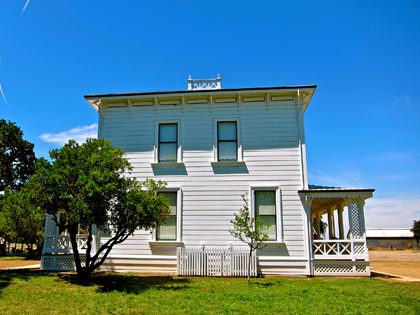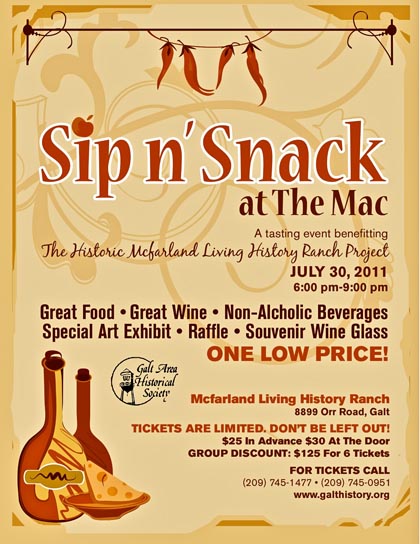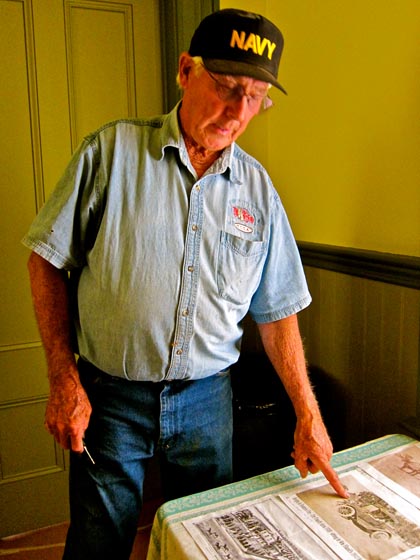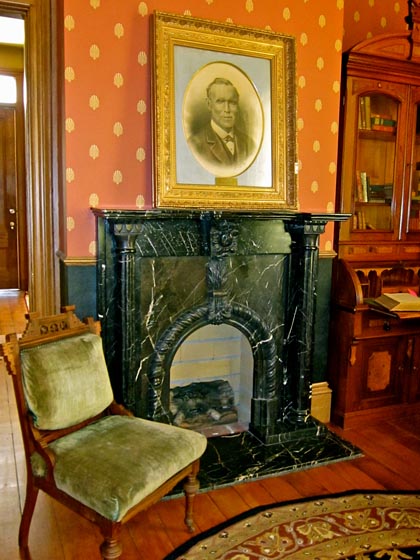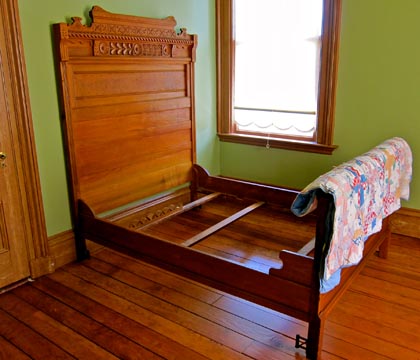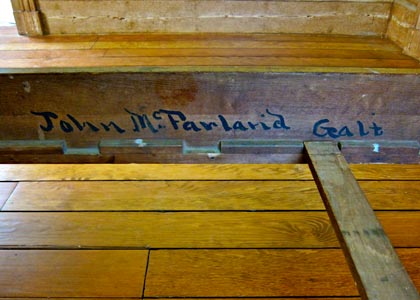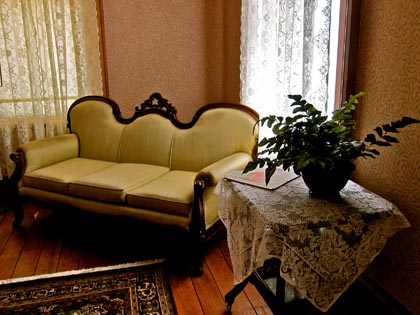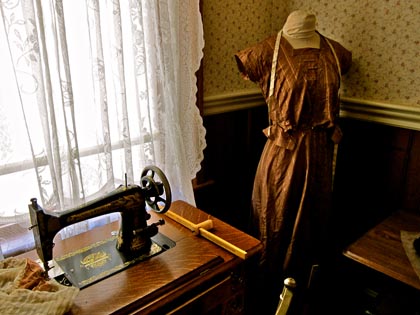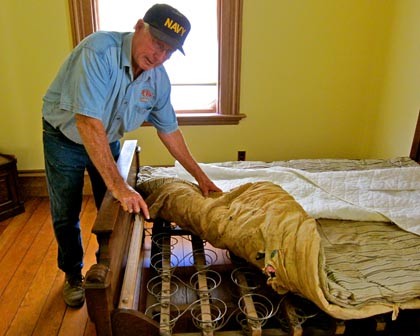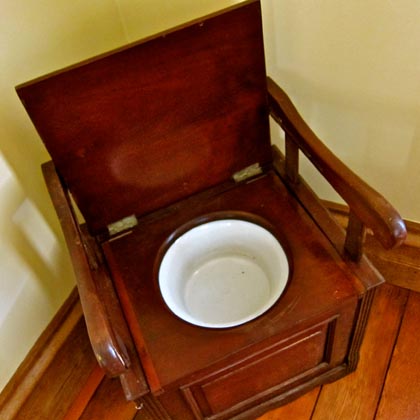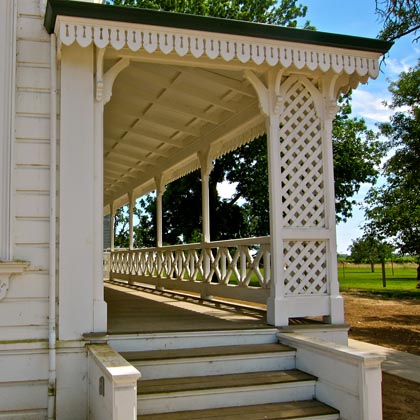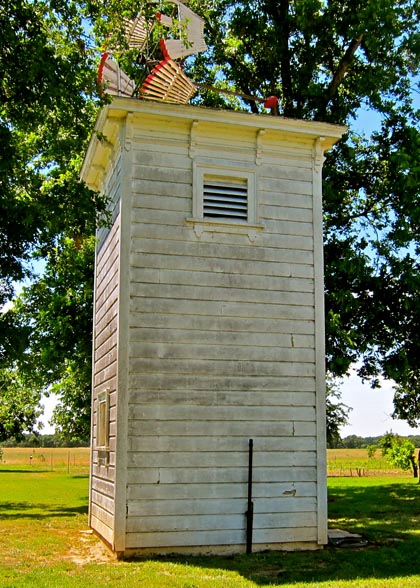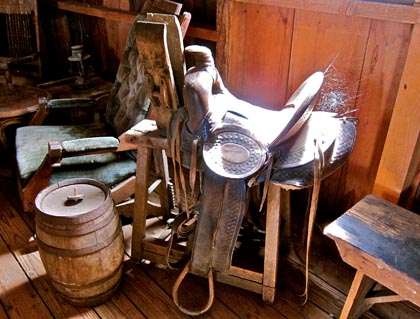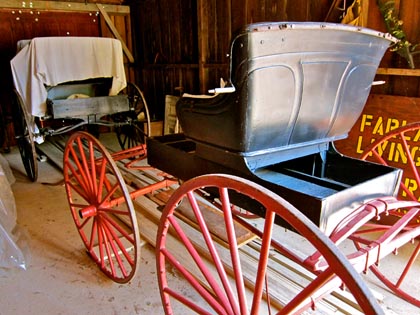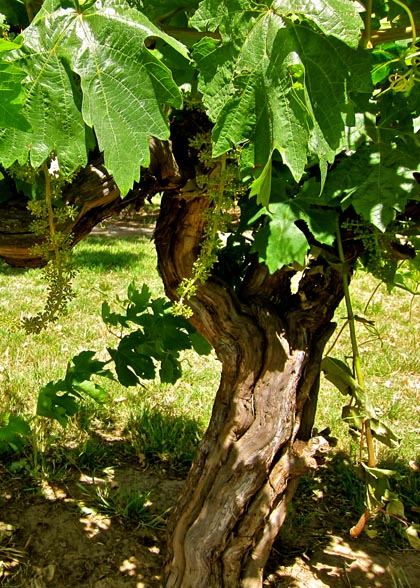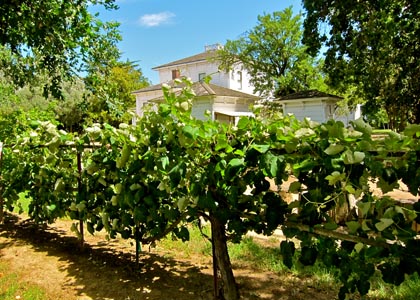Letters from Lodi
An insightful and objective look at viticulture and winemaking from the Lodi
Appellation and the growers and vintners behind these crafts. Told from the
perspective of multi-award winning wine journalist, Randy Caparoso.
Sip’n at historic McFarland Ranch
The McFarland Ranch home (completed 1878)
Enjoy great wine, music and friends at Galt’s historic landmark
The Lodi AVA is as much about the history of its families — many still working the farms and ranches established since the late 1850s — as the incredible strides evident in the quality of its wine grapes and increasingly acclaimed wines, now enjoyed all over the world. This is why preservation of Lodi’s past is as important to the region as the bold, innovative steps being taken to assure its future prosperity.
Tucked between miles of vineyards farmed by Vino Farms, Peltier Station‘s Rod Schatz, Amrik Dahliwal and others, in the Lodi sub-AVA known as Cosumnes River, and the beautiful riparian oak and wetland habitat known as the Cosumnes River Preserve, is the The McFarland Living History Ranch. It will be on the grounds of this 35 acre site, maintained by the Galt Area Historical Society, that the Sip n’ Snack at The Mac will take place, this coming July 30 at 6-9 PM. Details:
Among the wineries coming out in force to pour their vinous libations to go with the barbecue, pastas, and music of Gary Don Ricks and the Would Be Famous Band (think of a rocking gumbo of George Strait, Jimmy Rodgers, ZZ Top, George Jones and the Eagles) will be:
Alma de la Vina
Barefoot Wine & Bubbly
Barsetti Vineyards
Borra Family Winery & Vineyards
E2 Family Winery
Fenestra Winery
Jeremy Wine Company
Klinker Brick Winery
Michael~David Winery
Mt. Aukum Winery
Peltier Station & Hybrid Wines
Weibel Family Vineyards
In addition, Lodi’s own Bellindora Vinegars will be there to show off their luscious balsamics, as well as an art display (and sales) from the collection of the late Pat Frey Arrants, and a crafts table manned by Mad Crafter by Pat Frey. You can also purchase ticket at the Galt Area Historical Society Web site.
The Galt Area Historical Society’s Ronald Jacobsen
But the centerpiece will be the beneficiary of the Sip n’ Snack proceeds: the original, magnificent home of Galt pioneer, John McFarland (1823-1902), who at one point owned, farmed and ranched the 3,800 acres visible from the home’s rooftop widow’s walk. Although Mr. McFarland never married, descendents of his niece, Mary Orr, lived in the home up until the eighties, when the estate was sold to the Nature Conservancy, who then sold 105 acres (including the home) to the Sacramento County Department of Regional Parks, Recreation & Open Space.
Knowing the importance of the home to the people of the City of Galt — John McFarland not only named Galt, he diverted railways to go through it, built numerous buildings in the town, and made extensive contributions to local churches and schools — the county granted a 99 year lease to the Galt Area Historical Society, which in 1998 commenced the arduous, meticulous task of restoring the ranch to as much of its original properties as possible.
Ronald Jacobsen, who has been heading up the restoration team, ushered us through the ranch house and its surrounding buildings (a spectacular tank tower with a collapsible wine mill, a bunkhouse built by McFarland for his Miwot Indian hands, a carriage house, outdoor privy, barn, corrals, coops, pens and sheds) while regaling us with stories of McFarland’s accomplishments, some almost herculean in scope.
Just getting out of the gate was something of a triumph in McFarland’s century. He was born in Scotland, one of 11 children; but by the time his parents, John and Jeanette McFarlane (their spelling), immigrated to Canada in 1834, there were only 5 surviving children. John’s mother and two younger brothers contracted cholera and died within days of their arrival. At the age of 15 John the younger began working as a carpenter and joiner in the east, and in March 1850 he headed west to LaSalle to visit his older sister Janet, proceeded on wagon wheels to Salt Lake City, and finally arrived in Placerville, California on August 23 with $2 in his pocket, and nothing else besides tattered shoes and a pair of old pants found in the Sierras.
Portrait of John McFarland in his parlor
What McFarland possessed, though, was shrewd entrepreneural skills. He started by prospecting in the Placerville area along with thousands of other mostly womenless men (including, according to record, over 60,000 Chinese), but couldn’t afford to pay for his own board. So he purchased a town lot, cleared it, and sold it for $50 that same day. With that money he purchased the carpentry tools that he lacked, and began building, acquiring real estate valued at $800 while clearing $600 — all by December of 1850.
McFarland also did well in the mines, making $3,000 over the next two years. As access to water was scarce in those days, McFarland invested in a claim 1,200 feet above a river, formed a company of 20 men to dig a 16 mile ditch through rugged terrain to get water to the miners, and charged them $1 per miner’s inch for the access. It took McFarland four months to dig that first ditch, costing a then staggering sum of $20,000. He went on to dig more ditches, including one extending 50 miles from Mokelumne Hill to Placerville, costing $400,000 to build. Thus, a fortune was made, which enabled him to purchase farmland on flatland in the mid-1850s in the area that was to become Galt (McFarland named it after the town in Canada where his family lived), 25 miles south of Sacramento, where the McFarland Living History Ranch stands today.
McFarland’s Galt abode was completed in 1878, and today over 50,000 children visit it each year, learning about the pioneering life and 19th century farming. Boy Scout troops are also a constant presence — their pup tents pitched on the open field grounds — and annual events like Kite Day, Heritage Day, Pumpkin Patch, the Old Gas Engine Show and the Galt Old Car Festival take place on the gravel or lawn where McFarland’s oaks, orchards and vines once stood in profusion.
Final phases of the McFarland Living History Ranch Restoration Project are directly dependent upon funding from events like Sip n’ Snack and the dedication of dozens of volunteers. For more information on how to contribute, please visit their Web site at mcfarlandranch.org, and we hope to see you come out for a taste of history, terrific Lodi wine and victuals on July 30! A photographic tour:
John McFarland's original bedframe, donated by the family
Mr. McFarland's name carved onto his bed
The women's parlor
Italianate Victorian kerosene lamp
Dedicated sewing room
Mr. Jacobsen points out original horse hair mattress and double roller springs in Mary Orr's bedroom
Lidded chamber pot (no in-house toilets in the 19th century)
Detailed portico and lattice work replicated from old photos of the back porch
Tank house with collapsible windmill
Bunkhouse accoutrements
Carriage house
Ancient table grape vine at McFarland Ranch
The McFarland abode through the espaliered vines
